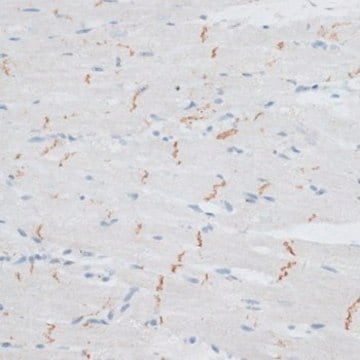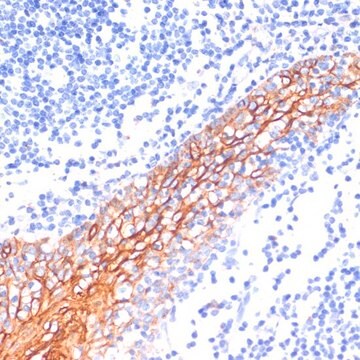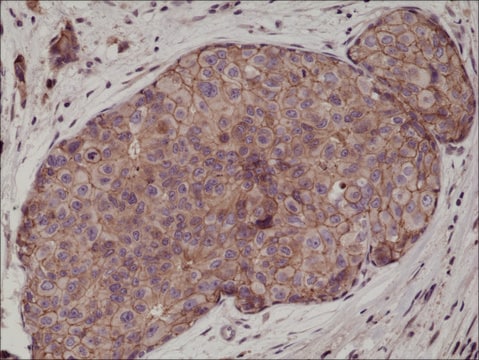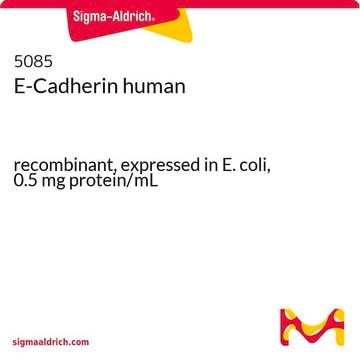C3865
Anti-N-Cadherin antibody, Mouse monoclonal
clone GC-4, purified from hybridoma cell culture
Synonym(e):
Anti-A-CAM, Anti-A-Cell Adhesion Molecule
About This Item
Empfohlene Produkte
Biologische Quelle
mouse
Konjugat
unconjugated
Antikörperform
purified immunoglobulin
Antikörper-Produkttyp
primary antibodies
Klon
GC-4, monoclonal
Form
buffered aqueous solution
Mol-Gew.
antigen 135 kDa
Speziesreaktivität
chicken, monkey, mouse, human, rabbit, rat
Methode(n)
electron microscopy: suitable
flow cytometry: suitable
immunocytochemistry: suitable
immunohistochemistry: 10-20 μg/mL using rat cardiac muscle frozen sections
western blot: 10-20 μg/mL using chicken cardiac muscle or COS-7 cell extracts
Isotyp
IgG1
UniProt-Hinterlegungsnummer
Anwendung(en)
research pathology
Versandbedingung
dry ice
Lagertemp.
−20°C
Posttranslationale Modifikation Target
unmodified
Angaben zum Gen
human ... CDH2(1000)
mouse ... Cdh2(12558)
rat ... Cdh2(83501)
Verwandte Kategorien
Allgemeine Beschreibung
Anwendung
- electron microscopy
- flow cytometry
- immunocytochemistry
- immunohistochemistry at a concentration of 10-20μg/mL using rat cardiac muscle frozen sections
- western blot at a concentration of 10-20μg/mL using chicken cardiac muscle or COS-7 cell extracts
Biochem./physiol. Wirkung
Physikalische Form
Sonstige Hinweise
Haftungsausschluss
Not finding the right product?
Try our Produkt-Auswahlhilfe.
Empfehlung
Lagerklassenschlüssel
12 - Non Combustible Liquids
WGK
WGK 2
Flammpunkt (°F)
Not applicable
Flammpunkt (°C)
Not applicable
Persönliche Schutzausrüstung
Eyeshields, Gloves
Analysenzertifikate (COA)
Suchen Sie nach Analysenzertifikate (COA), indem Sie die Lot-/Chargennummer des Produkts eingeben. Lot- und Chargennummern sind auf dem Produktetikett hinter den Wörtern ‘Lot’ oder ‘Batch’ (Lot oder Charge) zu finden.
Besitzen Sie dieses Produkt bereits?
In der Dokumentenbibliothek finden Sie die Dokumentation zu den Produkten, die Sie kürzlich erworben haben.
Kunden haben sich ebenfalls angesehen
Unser Team von Wissenschaftlern verfügt über Erfahrung in allen Forschungsbereichen einschließlich Life Science, Materialwissenschaften, chemischer Synthese, Chromatographie, Analytik und vielen mehr..
Setzen Sie sich mit dem technischen Dienst in Verbindung.













